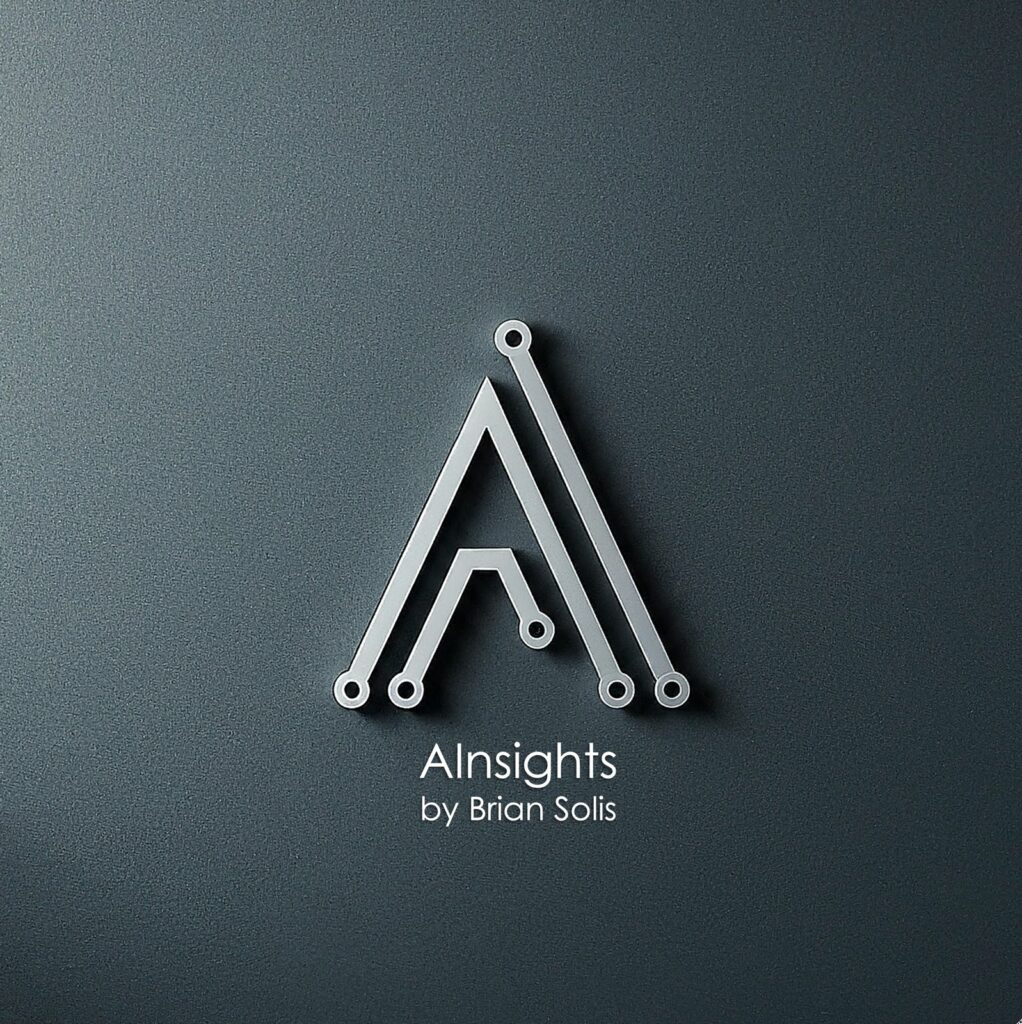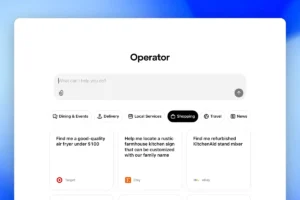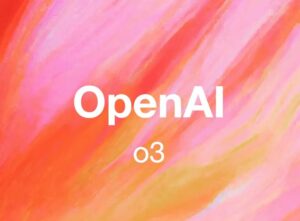AInsights: Generative insights in AI. This special series offers executive-level insights into the rapidly shifting landscape of generative AI.
OpenAI CEO Sam Altman says artificial general intelligence is on the horizon but will change the world much less than we fear.
Rumor is that Sam Altman was fired as CEO by the board over concerns in how Altman was aggressively pursuing artificial general intelligence (AGI). Now Altman is on record saying that our concerns over AGI may be overblown.
“People are begging to be disappointed and they will be,” said Altman.
AGI is next-level artificial intelligence that can complete tasks on par with or better than humans.
Altman believes that AGI will become an “incredible tool for productivity.”
“It will change the world much less than we all think and it will change jobs much less than we all think,” Altman assured
AInsights
Make no mistake. The stakes will only get higher. They already are with the arrival of generative AI.
In a conversation with Satya Nadella, Altman reminded us that there is no “magic red button” to stop AI.
But at the same time, we as humans are already evolving by using AI and we will continue to do so.
“The world had a two week freakout over ChatGPT 4. ‘This changes everything. AGI is coming tomorrow. There are no jobs by the end of the year.’ And now people are like, ‘why is it so slow!?’,” Altman joked with the Economist.
While he is aiming to downplay the role of AGI, generative AI is already showing us what we can expect. We need a new era of AI-first leadership. We need decision-makers who can not only automate work but also imagine, inspire, and empower a renaissance, one where workers and jobs are augmented with AI to unlock new potential and performance.
DeepMind co-founder Mustafa Suleyman warns AI is a ‘fundamentally labor replacing’ tool over the long term.
A session at the World Economic Forum (WEF) in Davos, said the quiet part out loud, AI is coming for jobs. I feel like this is more than just a bullet in this AInisights update. This is a canary in the coal mine if that’s still a relevant reference point.
In an interview with CNBC, DeepMind Co-Founder Mustafa Suleyman was asked by if AI was going to replace humans in the workplace.
This was his answer, “I think in the long term—over many decades—we have to think very hard about how we integrate these tools because, left completely to the market…these are fundamentally labor replacing tools.”
And he’s right. Let’s get that part out of the way.
Left to their own devices, executives naturally gravitate toward what they know, automation and cost-cutting to increase margins and profitability. To change their perspective, center insights on what drives their KPIs.
AInsights
Suleyman is not saying this from a doomsday perspective. He’s asking us to think differently about how we use AI to augment our work, and more importantly, our thinking…
In reality, executives have never, we’ve never, had access to technology that can collaborate and create. We’ve always been the source of creation. Executive decision-making is what drives businesses. At most, digital transformation, predictive analytics, have aided in decision-making. But now, AI can now augment decision-making, perform work, make us smarter and more capable, and unlock new possibilities.
That takes a new vision and a new set of KPIs to attach to executive decision-making.
For example, IKEA launched an AI bot named Billie to lead first level contact with customers, effectively managing 47% of customer queries directed to the call centers.. In a time when everyone is talking about AI replacing jobs, IKEA trained 8,500 call center workers to serve as interior design advisers, generating 1.3 billion euros in one year.
Stanford AI and Robotics debut developmental robot that makes the Jetsons a reality.
Zipping Fu, Stanford & Robotics PhD at Stansford AI Lab, shared his team’s incredible project, Mobile ALOHA. The team includes Tony Zhao and Chelsea Finn.
If you ever watched the Jetsons, then you, like me, wished that we’d see Rosey come to life one day. And from an R&D perspective, that’s exactly what’s happening in Silicon Valley .
Meet Mobile ALOHA:
Imitation learning from human demonstrations has shown impressive performance in robotics. However, most results focus on table-top manipulation, lacking the mobility and dexterity necessary for generally useful tasks. In this work, we develop a system for imitating mobile manipulation tasks that are bimanual and require whole-body control. We first present Mobile ALOHA, a low-cost and whole-body teleoperation system for data collection.
To date, their testing now includes 50 autonomous demos to accomplish complex mobile manipulation tasks.
Tasks include laundry, self-charging, vacuuming, watering plants, loading and unloading a dishwasher, making coffee, cooking , getting drinks from a refrigerator, opening a beer, opening doors, playing with pets, use an elevator, and so much more.
https://twitter.com/zipengfu/status/1742973258528612724
AInsights
While early in its development, Mobile ALOHA is one of the many robotics projects being trained to perform complex human tasks. In these demos, we see tele-operated tasks, but the team does have autonomous results for a smaller set of tasks. The point is that this is how AI robots learn how to repeat and optimize tasks.
For comparison, this is Tesla’s Optimus robot learning how to fold clothes.
This is the @Tesla Optimus robot. Here it learns to fold a shirt. Next, it will do this autonomously, in most environments, at speed.
— Brian Solis (@briansolis) January 21, 2024
Perhaps more so, the fact that Mobile ALOHA is accelerating at Stanford, we can only imagine how many advanced AI-powered robotics initiatives are taking place around the world that we don’t know about. At any moment, breakthroughs will reach the masses and suddenly your next big purchase might not only be aimed at an Apple Vision Pro.
AI-powered ‘answers’ engine Perplexity raises $73.6 million, now valued $520 million, expected to compete against Google.
Perplexity is an AI-powered answers engine that also cites its sources. As a former analyst, I very much appreciate the ability to fine-tune academic sources. This is one of the very few generative AI tools that I use on a daily bases.
The company raided $73.6 million in a funding round led by IVP with additional investments from Databricks Ventures, Shopify CEO Tobi Lutke, NVIDIA, and Jeff Bezos. That’s a pretty powerful group betting on the future of AI-powered search.
The company was founded by Aravind Srinivas, Denis Yarats, Johnny Ho and Andy Konwinski. Srinivas previously researched languages and GenAI models at OpenAI.
Perplexity aims to address weaknesses in current search models, particularly in providing transparency and accuracy (read SEO/SEM/LLM). Additionally, Perplexity provides a conversational AI interface that tunes search queries with follow-up questions, helping users get more relevant answers. Unlike conventional search engines, Perplexity.ai employs deep learning algorithms to gather information from diverse sources and present it in a concise and accurate manner.
AInsights
I use Perplexity for its focus on transparency and ability to elevate and hone answers based on prompts and continuing exchanges. Google still plays a big role in my search behavior. But, and I’ve said this going back to every social media attempt, the company lacks a human algorithm. Traditional search is an always-evolving machine algorithm. But when someone asks a question, they do so from a human perspective. Human-centered algorithms can account for intent and desired outcome to then activate algorithms accordingly. Language vs. rank becomes key here.
On a side note, Perplexity and Rabbit announced a partnership to integrate the answer engine into the R1.
We're thrilled to announce our partnership with Rabbit: Together, we are introducing real-time, precise answers to Rabbit R1, seamlessly powered by our cutting-edge PPLX online LLM API, free from any knowledge cutoff. Plus, for the first 100,000 Rabbit R1 purchases, we're… pic.twitter.com/hJRehDlhtv
— Perplexity (@perplexity_ai) January 18, 2024
Stability AI introduces a smaller, more efficient language model (aka small language model) to democratize generative AI.
Stability AI, makers of Stable Diffusion, released its smallest LLM to date, Stable LM 2 1.6B. This is really about enhancing AI accessibility and performance, while also compromising the very same things for those partners looking to go bigger. The model is smaller and more efficient, aiming to lower barriers and enable more developers to utilize AI in various languages (English, Spanish, German, Italian, French, Portuguese, and Dutch).
The release represents the company’s commitment to continuous improvement and innovation in the field of artificial intelligence.
AInsights
This release signifies a major advancement in AI language models, particularly in the multilingual and 3D content creation domains. The model’s outperformance of other small AI language models highlights its potential to drive innovation and competitive advantage for businesses investing in AI technologies. Said simply, this presents an opportunity for executives to leverage cutting-edge AI capabilities for driving innovation, improving accessibility, and staying ahead in the competitive landscape.
The model’s superior performance lowers hardware barriers, allowing more developers to participate in the generative AI ecosystem. This can be leveraged by executives to drive innovation, improve accessibility, and gain a competitive edge in the rapidly evolving AI landscape. Additionally, the model’s integration of Content Credentials and invisible watermarking makes it suitable for a wide range of applications, including automated alt-text generation and visual question answering. This positions Stable LM 2 1.6B as a valuable tool for enhancing accessibility and expanding the reach of AI-driven solutions, which is increasingly important in today’s business environment.
TikTok gives users the ability to use generative AI to create songs (sort of).
TikTok has become an incredible platform for discovering new music and also for launching new artists. Now, with AI Song, users can create new music with text prompts.
AInsights
This isn’t yet what we think. It’s more of an AI song collaborator using an existing music library.
“It’s not technically an AI song generator — the name is likely to change and it is currently in testing at the moment,” Barney Hooper, spokesperson for TikTok said in an email to The Verge. “Any music used is from a pre-saved catalog created within the business. In essence, it pairs the lyrics with the pre-saved music, based on three genres: pop, hip-hop, and EDM.”
This also opens up a can of worms. With the New York Times suing OpenAI over copyright infringement, and OpenAI and Apple and others striking deals with media companies to allow LLMs to train on their data, TikTok and others have to build on a more collaborative foundation.
AI is coming for creatives according to FT.
I guess we’re going to have to get used to headlines like this, in every industry.
According to FT, Architects are incorporating DALL-E, Midjourney, and other generative AI tools for complex design work, threatening the industry of illustrators and animators.
You’ll notice similar observations in this article, Suleyman’s interview, and from others. Up until now, humans were the only species that could conceive and build on original ideas. AI is now an infinite idea factory, building on the ideas of humankind. AI has been trained on everything that humans have created.
We should not fear this, we should embrace it if we’re to move forward and upward.
AInsights
Here, we need to revisit the conversation where Suleyman warned every business that AI will replace certain jobs. As humans, we need to stoke our creativity, our imagination, and most importantly, our empathy, to create and collaborate with AI in ways that weren’t possible before.
We can’t fear AI and robots if we’re not willing to stop acting like them in our work. AI is creating new opportunities and areas for innovation, that in all honesty, are overdue.
Wayne He is the founder of XKool in Shenzhen, a team of former Google engineers, AI scientists, mathematics, and cross-over designers. Her words close out these AInsights…
“In the future, architects will be empowered to show the client thousands of options and refine the best one so that even on a low budget you will be able to get the best building. We worry about AI escaping human control and causing a disaster for mankind, and in my novels most of the future AI scenarios are not optimistic. But it is this writing which gave me an awareness to prevent these things happening. AI should be a co-pilot and a friend, not a replacement for architects.”
Please subscribe to AInsights.
Please subscribe to my master newsletter, a Quantum of Solis.

Brian Solis | Author, Keynote Speaker, Futurist
Brian Solis is world-renowned digital analyst, anthropologist and futurist. He is also a sought-after keynote speaker and an 8x best-selling author. In his new book, Lifescale: How to live a more creative, productive and happy life, Brian tackles the struggles of living in a world rife with constant digital distractions. His previous books, X: The Experience When Business Meets Design and What’s the Future of Business explore the future of customer and user experience design and modernizing customer engagement in the four moments of truth.
Invite him to speak at your next event or bring him in to your organization to inspire colleagues, executives and boards of directors.












Leave a Reply